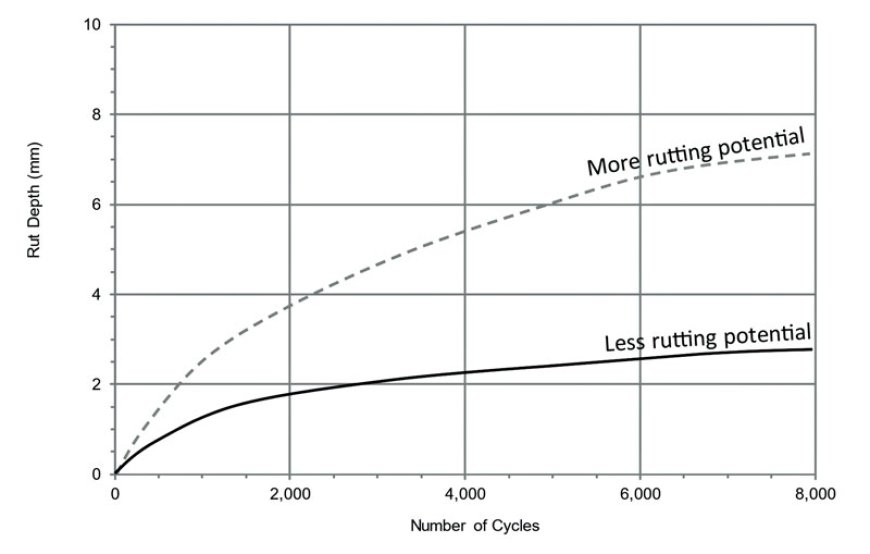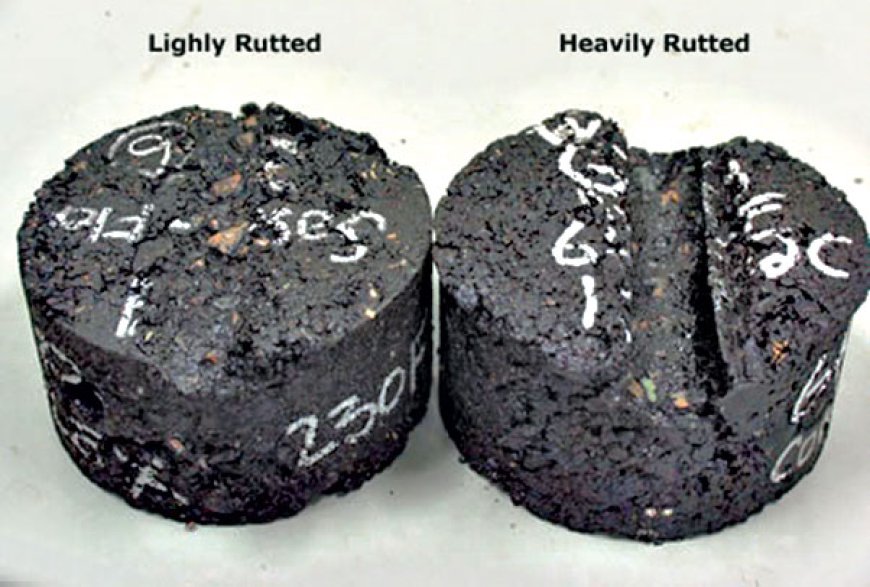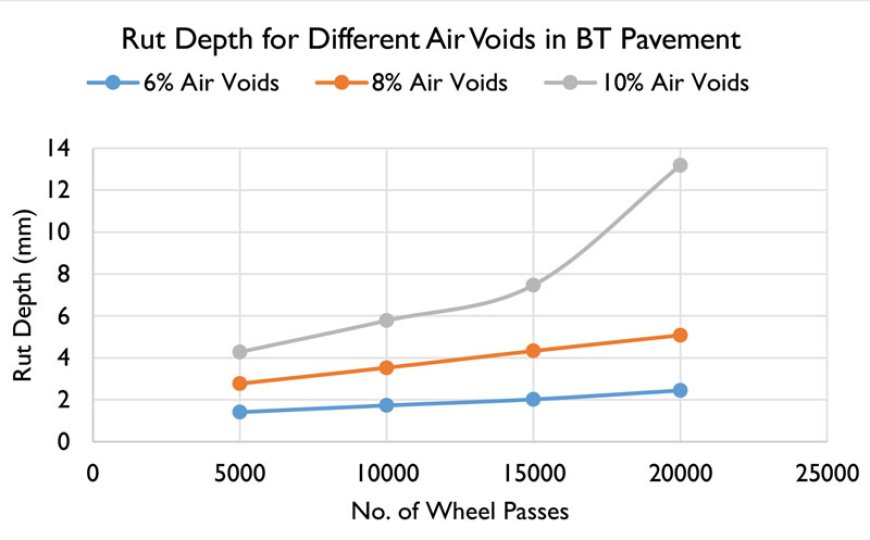Understanding PREMATURE RUTTING DISTRESSES on Indian Highways

Rutting is a permanent deformation in wheel path of a bituminous pavement. The rutting is a serious issue on bituminous roads in India. There can be various reasons for rutting distresses namely, either pavement crust thickness is not sufficient, bituminous mixes are not strong, selection of bitumen is an issue, foundation of pavement is weak, compaction is not adequate, or quantity and quality of bitumen is inappropriate. Let us address issue pertaining to bituminous mix, which directly bear direct impact of vehicular loading and climate. Will not that be good, if we can find good versus poor mix during mix design phase?
Do we evaluate rutting performance of bituminous mixes in India?
No, we do not evaluate rutting performance of bituminous mixes in India. We do not implement performance-based mix design concept in India. In fact, this is the weakest link in the mix design process. We must introduce a mandatory test for checking at least rutting performance of mixes before accepting mix design for production of mixes and construction of flexible pavements. Though some country makes rutting, fatigue, and moisture as mandatory tests.
How can I ensure rutting performance of bituminous mixes?
There are few laboratory tests which can be conducted on bituminous mixes during the mix design phase, prior to construction. Flow number (dynamic creep), flow time (static creep), and Hamburg wheel tracking (HWT). We at IIT Bombay have facilities to conduct all the tests. Let us talk about HWT, which is being widely used. Though flow number is also considered as a gold standard for differentiate poor vs. good mix.

What is Hamburg wheel rut tester (HWT)?
Typically slab compactor or Superpave gyratory compactor (SGC) are require to prepare the samples for HWT test. HWT rutting is an important performance test on bituminous mixes. This test is one of the mandatory tests in many of the countries to ensure rutting performance of bituminous mixes during mix design phase. A mix is to be tested under HWT first, and if it fails, then mix design, materials (bitumen, aggregate gradation) are to be altered to reach to a satisfactory performance of a mix. The test has shown good correlation with field rutting of pavement. Figure 1 shows HWT instrument at IIT Bombay.

How HWT test is conducted?
In this test, a steel/tire wheel rolls over a compacted bituminous mix sample at high temperature (say 55 or 60 C).
The sample is submerged in water.
Usually wheel rolls 20000 cycles, and permanent deformation in the sample is measured afterward.
The test is conducted as per EN 12697-22 - Dry and wet HWTT (use rubber wheel) or AASHTO T324 - Wet HWT (used steel wheel)

What is limiting value of rutting for bituminous mixes tested in HWT?
Many countries have limiting value of rutting after 20,000 cycles, some country limit 12.5 mm, 20 mm, or even less 5 mm rut for heavy traffic roads.
The test is usually conducted on a cylindrical sample, compacted at 7% air voids.
How data of HWT look like?
Figure 2 shows typical results of two mixes (less rutting potential versus more rutting potential). You can clearly see
that HWT is able to differentiate in the rutting performance of mixes.

How compacted sample look like after HWT test?
Figure 3 shows the sample after completion of the HWT test. There are two sample, lightly rutted and heavily rutted sample of mix after HWT test.
Can we evaluate effects of compaction quality on rutting performance using HWT?
Yes. Figure 4 shows effects of compaction quality of bituminous layer on rutting performance. It’s evident more air voids result in higher rut of mixes, this bring importance of adequate compaction of the layer.

Dharamveer Singh
Ph.D. Professor
Department of Civil Engineering
Indian Institute of Technology Bombay (IIT)








